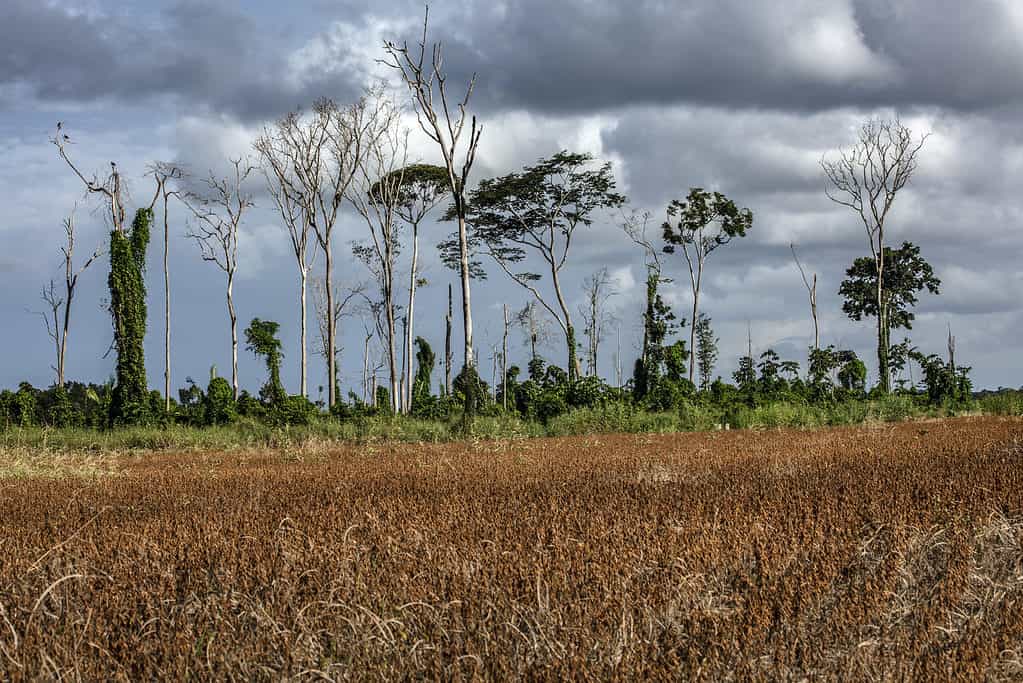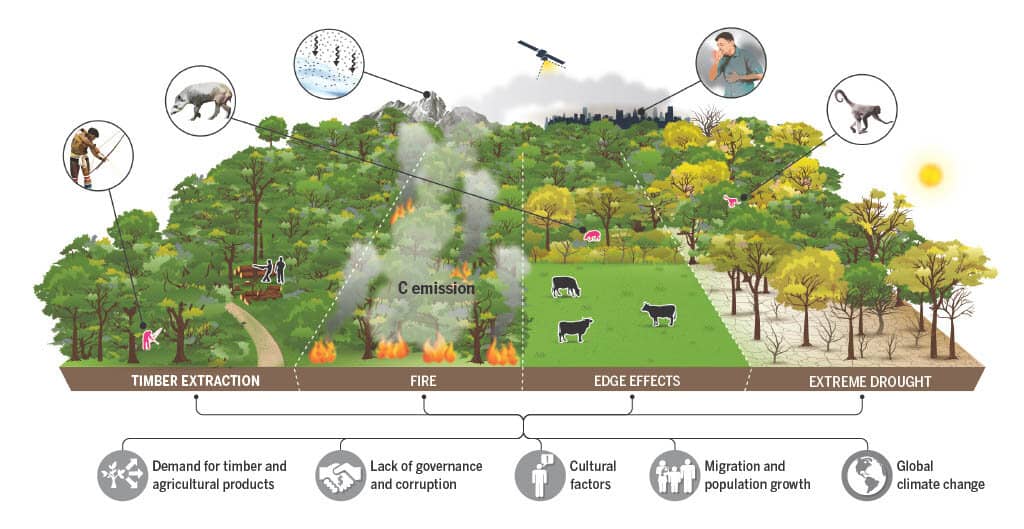The Amazon rainforest, a critical ecosystem for the entire world for its capacity to absorb greenhouse gas emissions, is being damaged at an unprecedented rate by human activity and drought, according to a new study. Researchers found the rainforest has been degraded by over a third, which is double the previous estimate.

An international team of researchers found up to 38% of the remaining forest area in the Amazon has been affected and is now emitting as much (or more) greenhouse gas than it is absorbing. There are four main disturbances driving degradation, including drought, illegal logging, forest fires, and changes in the forest near deforested areas.
The researchers define degradation as temporary or long-term changes in forest conditions caused by humans. It’s different from deforestation, where the forest is removed and a new land use, such as livestock, is established in its place. Although degraded forests can lose all their trees, the land use itself doesn’t change, they said.
“Despite uncertainty about the total effect of these disturbances, it is clear that their cumulative effect can be as important as deforestation for carbon emissions and biodiversity loss,” Jos Barlow, a professor of conservation science at Lancaster University in the UK and co-author of the new paper, said in a media statement.
A degraded rainforest
Climate change, deforestation and forest fires have put immense pressure on the Amazon since the early 2000s, with many studies warning about the risk of the rainforest eventually turning into a savannah. Rainforests support a much greater range of species than savannah and also play a bigger role in absorbing emissions from the atmosphere.

For their study, researchers went through data describing the changes in the Amazon published between 2001 and 2008 – studies, satellite data and an analysis of drought impacts. Drought accounted for most of the increase in degradation. This increases the forest’s vulnerability to fire and decreases its capacity to regenerate itself, they said.
The researchers proposed creating a monitoring system that could prevent the use of fire and illegal logging in the Amazon basin. They acknowledged that further research is needed to better understand the socio-economic impacts of forest degradation in the rainforest, claiming that only a few groups profit from the degradation process.
“Degradation benefits the few, but places important burdens on many,” Rachel Carmenta, co-author, said in a statement. “Few people profit from the degradation processes, yet many lose out across all dimensions of human well-being—including health, nutrition and the place attachments held for the forest landscapes where they live.”
The study, published in Science, comes at a time the Amazon is back on the attention of policymakers in South America. Brazilian President Lula da Silva, who took office this month, has pledged to end all deforestation by 2030 and has also reversed legislation put in place by former president Jair Bolsonaro, whose decisions led to deforestation expanding across Brazil.
Meanwhile, in Colombia, President Gustavo Petro has called for all countries in the Amazon basin to work together in an alliance to protect the rainforest. He said rich countries and multinational companies should pay indigenous leaders and communities for protecting the rainforest, allocating $500 million a year during the next 20 years.






